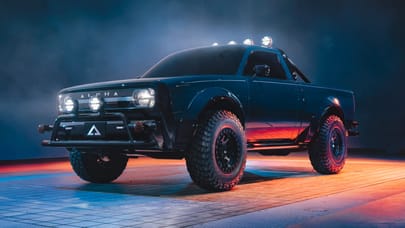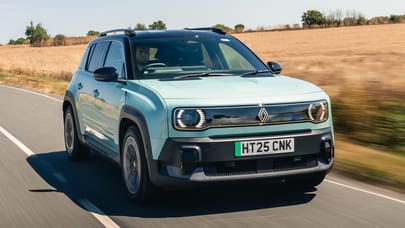

At the end of this short paragraph, glance down at your watch, have a good look at the time then return your eyes to the page. Ready? Go.
What did that take - a second or so? From the comfort of your armchair, it didn't feel like very long. Now imagine your armchair is travelling across a dusty South African desert at 1,000mph. In the time it took to register the position of the hands, then send that info to your brain and return your focus to the outside world, you'd have covered the best part of a mile.
But what if you're wearing a digital watch, or something with fancy styling for which readability is less important than looking good? It might have taken you a bit longer. Then you'd have covered two miles and, before you know it, it'd be time to deploy a parachute to slow you down before you run out of desert or your castors come off.
Don't panic. You're still in your chair, and this was just a game. But for Wing Commander Andy Green, this exercise proves a fairly important point: if you're going to install clock-like instruments in a supersonic car, they'd better be easy to read. Especially if your computers shut down and those old-fashioned hands and dials become your only means of knowing how long you have before the horizon meets your face...
Advertisement - Page continues below
It's why Green and his team needed a decent watchmaker on board. And who else do you go to but a company like Rolex? After all, it knows a thing or two about making chronographs, one of which was worn by Sir Malcolm Campbell for his land-speed record attempts in the Thirties. "I wear a Rolex every day," says Green. "When I put it down, my brain is processing the picture of where those hands were and I know it's ten past four. If that were a digital display, I wouldn't have time to read all those numbers or know what the time is. Clocks still have hands, and there's a reason. It's the way the brain works."
So it was over to Rolex's Special Equipments department, the same people who make the big countdown clocks at Le Mans and Daytona. Their brief from Green, an RAF fighter pilot, was to create a pair of analogue dials with an aviation-standard diameter and white-on-black dials with a backlight for maximum legibility. The result? A speedo and a chronograph, mounted in the cockpit either side of Green's knees.

The idea is that, if the primary information screens were to fail, Green could rely solely on the Rolexes. "Both dials are completely independent," says Green. "They have their own power supply and their own sensors. The rest of the car can be switched off, and the Rolex instruments will still work and give me everything I need to keep the car safe." As an added bonus, they are tested to withstand temperatures of 65 degrees Celsius - well above the required maximum of 50 degrees. Useful, considering the rocket behind him - which works alongside a jet turbine - will be hotter than the inside of a volcano.
The chronograph lives to Green's right-hand-side, and its biggest, centrally mounted hands move around the dial just like those on a watch. Only here, they don't tell the time - instead, the small hand shows the elapsed minutes and the bigger hand points to the seconds within each minute. So it's really just a big stopwatch, with its start/stop and reset buttons on Green's dashboard. And the circular subdial? That one does tell the time: in this image (see right), it's about quarter past three. Oh, and each hand has its own motor to ensure maximum reliability.
To his left is the speedo, which works just like any other speedo, only here it goes up to Mach 1.4. As the main needle sweeps around the dial, it pushes a green ‘memory' hand, which stays at the top of its arc as speeds fall again. After Green's first pass through the measured mile, it should rest just above his ultimate target, providing a buffer to ensure the average speed over two runs is at least 1,000mph. Because 999mph is for wimps.
Advertisement - Page continues below
In fact, anything over 763.035mph will break the current record, set by Green himself in Thrust SSC in 1997. But whereas Thrust relied solely on jet engines and gathered speed more gradually, Bloodhound will go from 0 to 1,000mph in just 55 seconds, thanks to added rocket power. By that time, it will have travelled 5.5 miles and will pass through the measured mile in 3.6 seconds.
If that sounds a tad uncomfortable, remember that Bloodhound must stop harder than it accelerates, as there's only 4.5 miles of desert left after the flying mile. At these speeds, simply coming off the throttle will generate 3g.The majority of the remaining 60-minute allowance will then be spent prepping the car for the return run. Just turning it around requires a 120-metre radius, even when Green applies full lock with his 3D-printed titanium steering wheel featuring rocket triggers nicked from a standard power drill. He found it in B&Q. Then it's in with 570 litres of jet fuel (a 10-minute job), 950 litres of peroxide rocket fuel (another 20 minutes), before topping up with 100 litres of cooling water, which is actually hot.
Will he make it back before time runs out? What will that speedo say at the end? As long as those Rolexes are ticking, we'll soon find out.
Trending this week
- Car Review
BMW 1 Series
- Top Gear's Top 9
Nine dreadful bits of 'homeware' made by carmakers







